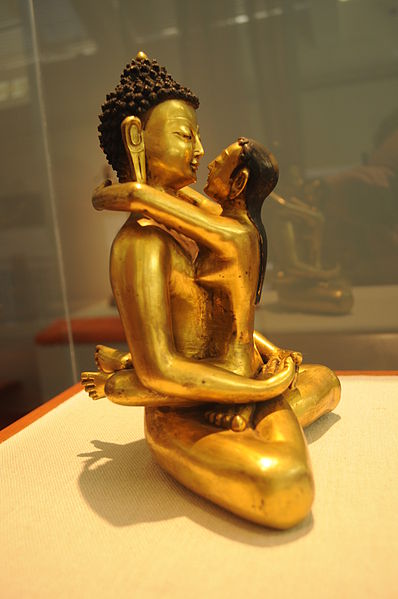Dzogchen, also known as atiyoga, is a tradition of teachings in Indo-Tibetan Buddhism and Bon aimed at discovering and continuing in the ultimate ground of existence. The goal of Dzogchen is knowledge of this basis, this knowledge is called rigpa. There are spiritual practices taught in various Dzogchen systems for awakening rigpa.
A widespread simile for ignorance is the obscuration of the sun by clouds
A gankyil, a Tibetan symbol which can symbolize various triple part ideas, such as the ground, path and fruit
An image of the Primordial Buddha Samantabhadra with his consort Samantabhadri. These images are said to symbolize the union of space (emptiness, the female aspect) and clarity - awareness (male).
The metaphors of sky and spaciousness are often used to describe the nature of mind in Dzogchen.
Classes of Tantra in Tibetan Buddhism
Classes of Tantra in Tibetan Buddhism refers to the categorization of Buddhist tantric scriptures in Indo-Tibetan Buddhism. Tibetan Buddhism inherited numerous tantras and forms of tantric practice from medieval Indian Buddhist Tantra. There were various ways of categorizing these tantras in India. In Tibet, the Sarma schools categorize tantric scriptures into four classes, while the Nyingma (Ancients) school use six classes of tantra.
Illuminated Pages from a Dispersed DharanI Manuscript
Panel from a Tibetan Buddhist Ritual Crown Depicting Buddha Vairocana, late 13th–early 14th century.
A Hevajra Mandala
Deities of the Chakrasamvara Tantra








